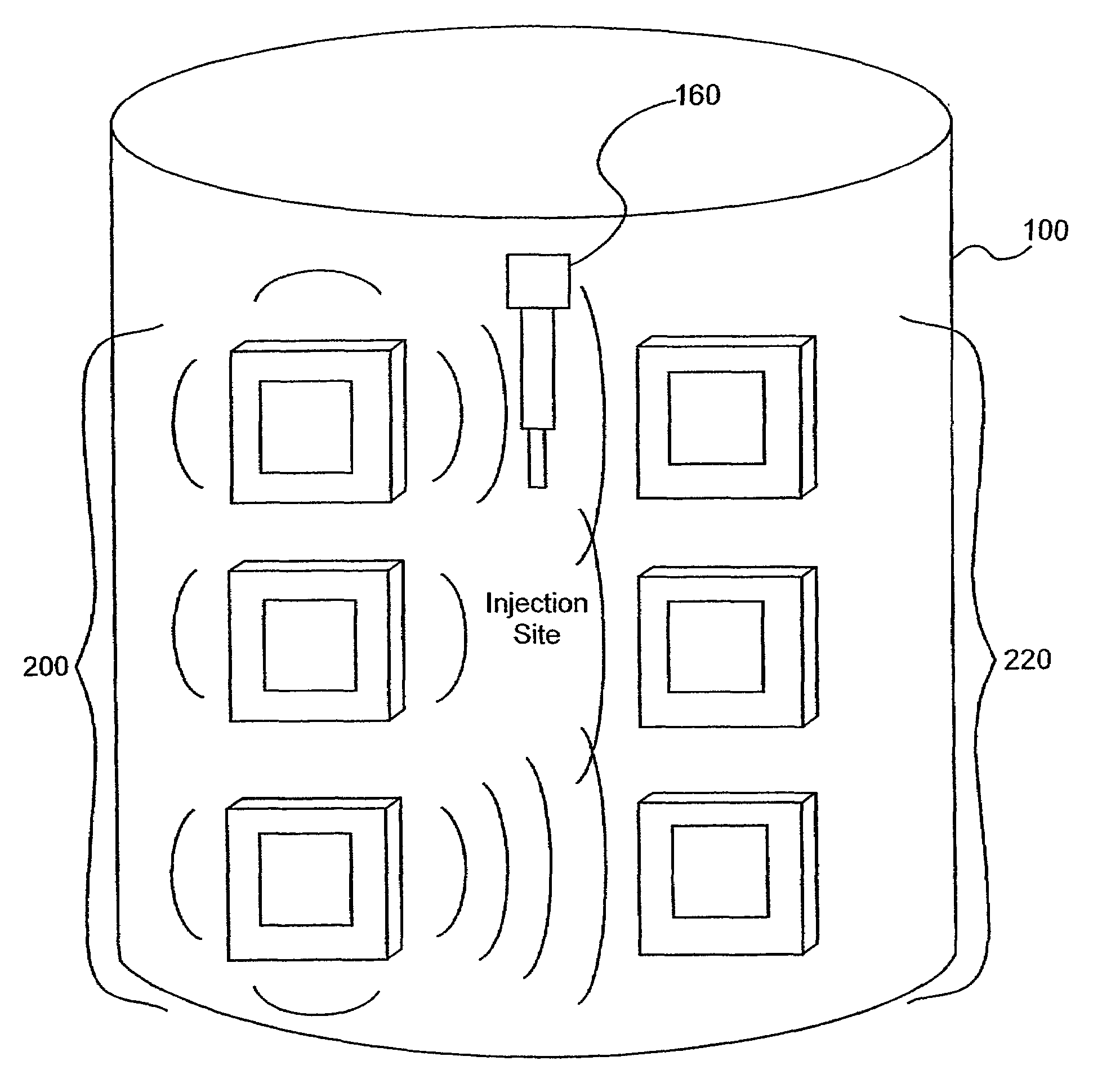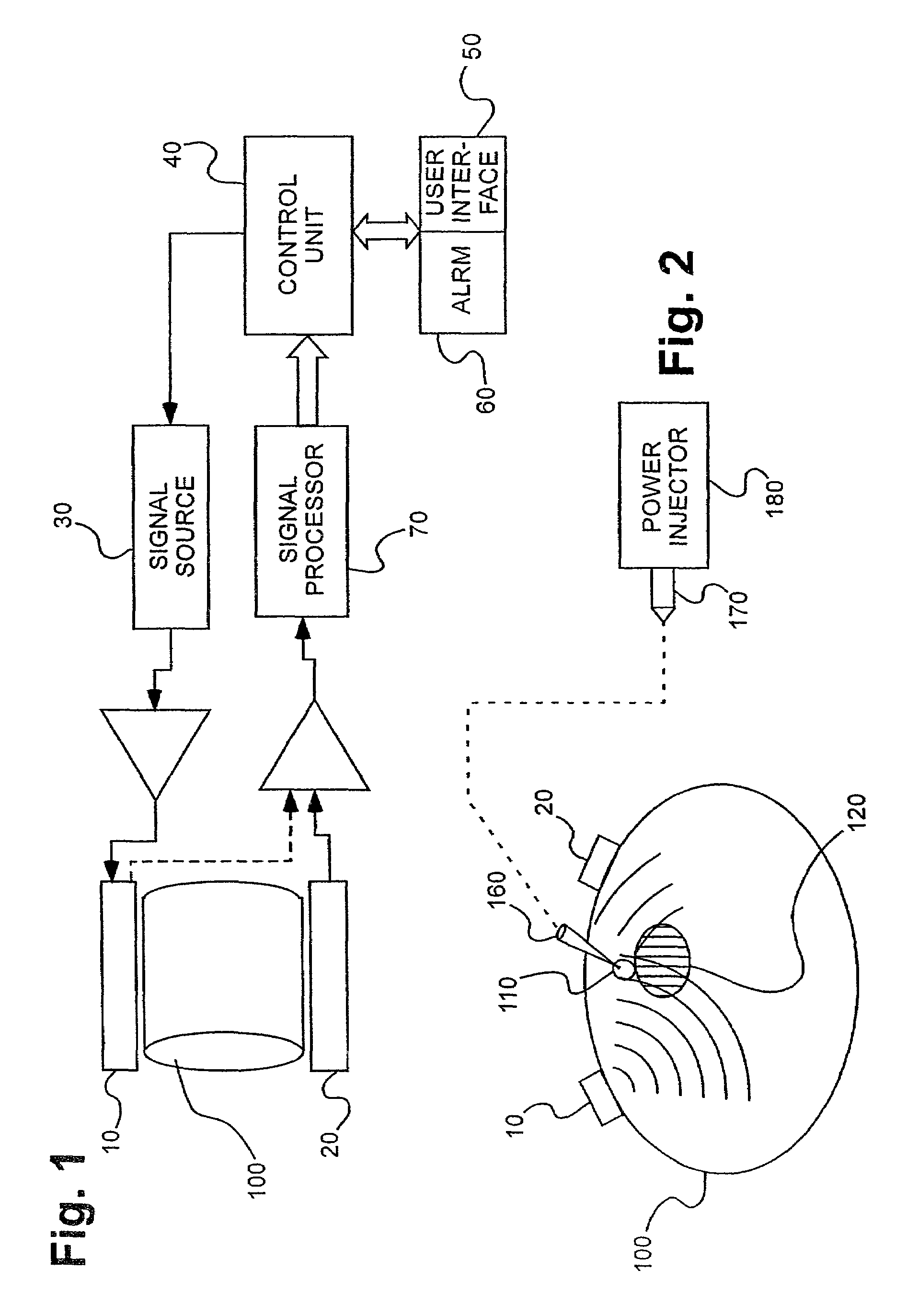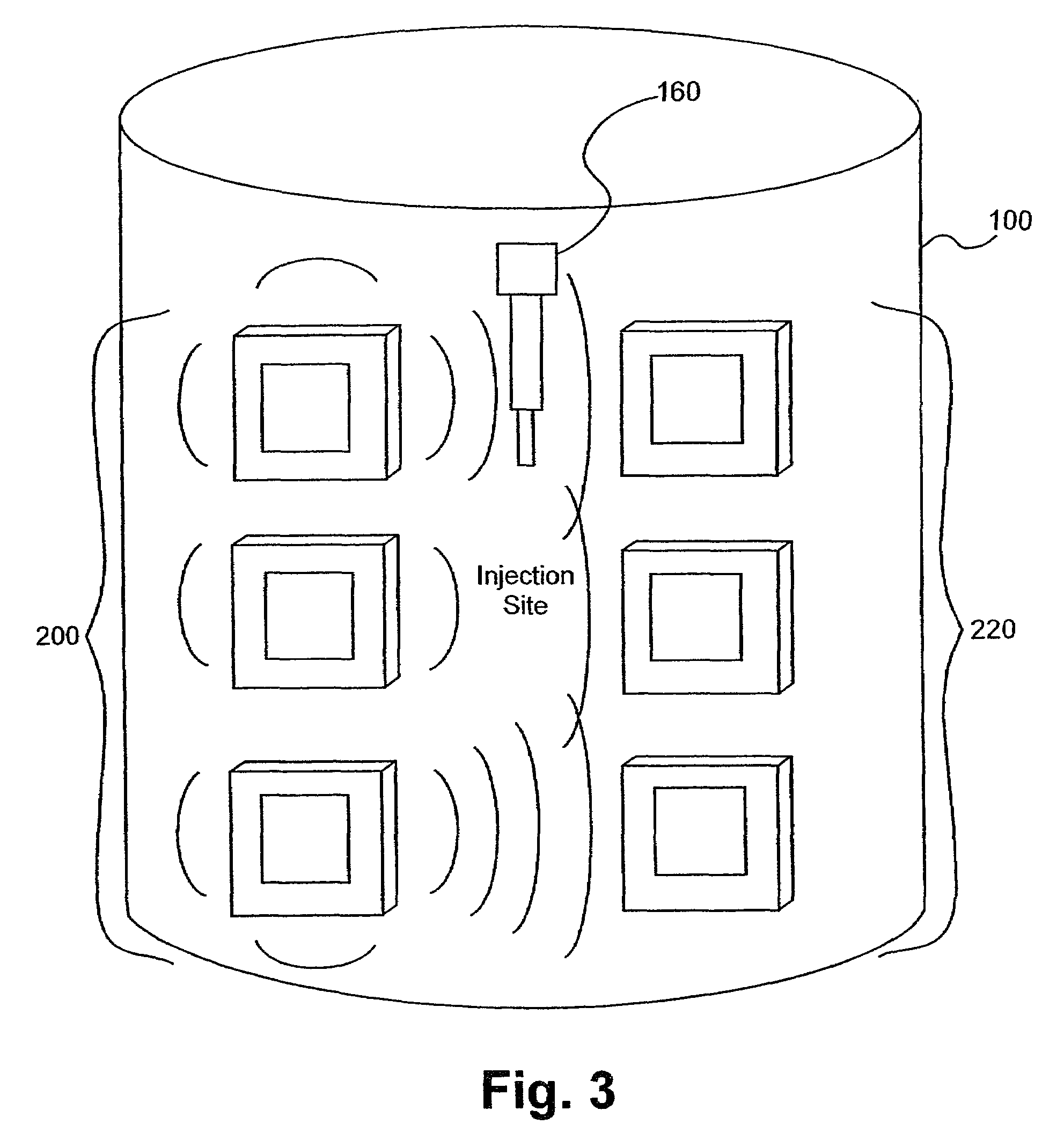Electromagnetic sensors for biological tissue applications and methods for their use
a technology of electromagnetic sensors and biological tissues, applied in the field of electromagnetic sensors, can solve the problems of increasing the risk of extravasation, affecting the detection of fluid and other materials in biological tissues, and the needle being pushed through the wall of the vessel, so as to improve the signal coupling and the resulting measurement
- Summary
- Abstract
- Description
- Claims
- Application Information
AI Technical Summary
Benefits of technology
Problems solved by technology
Method used
Image
Examples
experimental examples
[0105]1. Inorganic Phantom Experiments.
[0106]Several experiments demonstrating the use of the sensors of the present invention were carried out using single and dual microstrip patch antenna configurations and an inorganic phantom to represent human tissue. Such inorganic phantoms provide the opportunity to accurately control both the position and amount of a simulated extravasation in an environment of generally known and simple dielectric properties as compared to human tissue.
[0107]Below approximately 1 GHz, the wavelength becomes too large to provide adequate sensitivity to changes of interest in the tissue and approaching and, beyond 10 GHz, the penetration of the waves into the tissue becomes too small to provide adequate sensing depth. Thus, the antennae of the present invention that were used for this experiment were designed to resonate at an intermediate frequency of approximately 4 Ghz.
[0108]The microstrip antennae used in the studies leading to the present invention were...
PUM
 Login to View More
Login to View More Abstract
Description
Claims
Application Information
 Login to View More
Login to View More - R&D
- Intellectual Property
- Life Sciences
- Materials
- Tech Scout
- Unparalleled Data Quality
- Higher Quality Content
- 60% Fewer Hallucinations
Browse by: Latest US Patents, China's latest patents, Technical Efficacy Thesaurus, Application Domain, Technology Topic, Popular Technical Reports.
© 2025 PatSnap. All rights reserved.Legal|Privacy policy|Modern Slavery Act Transparency Statement|Sitemap|About US| Contact US: help@patsnap.com



